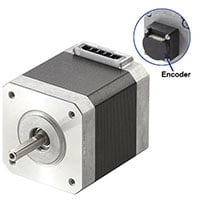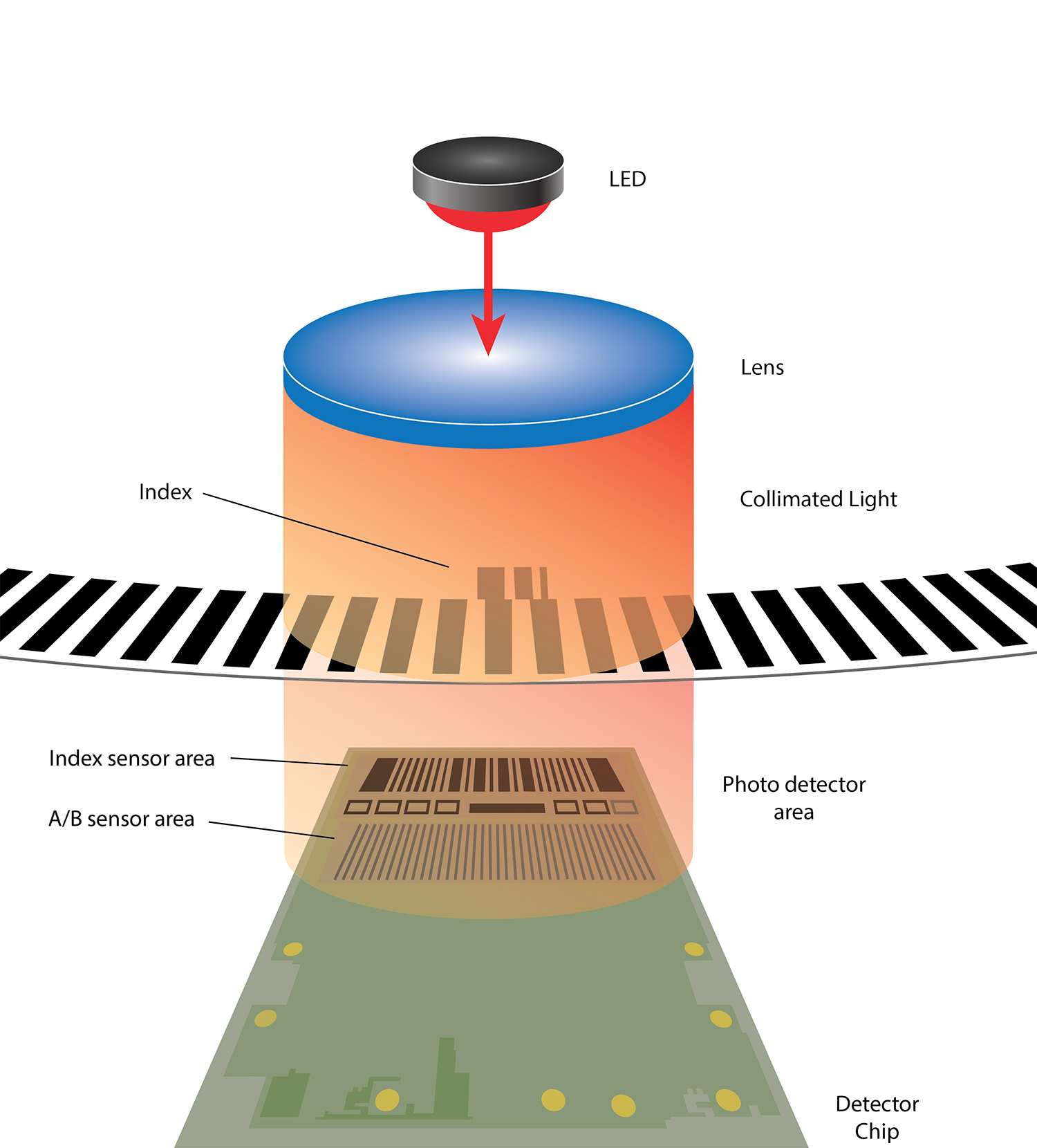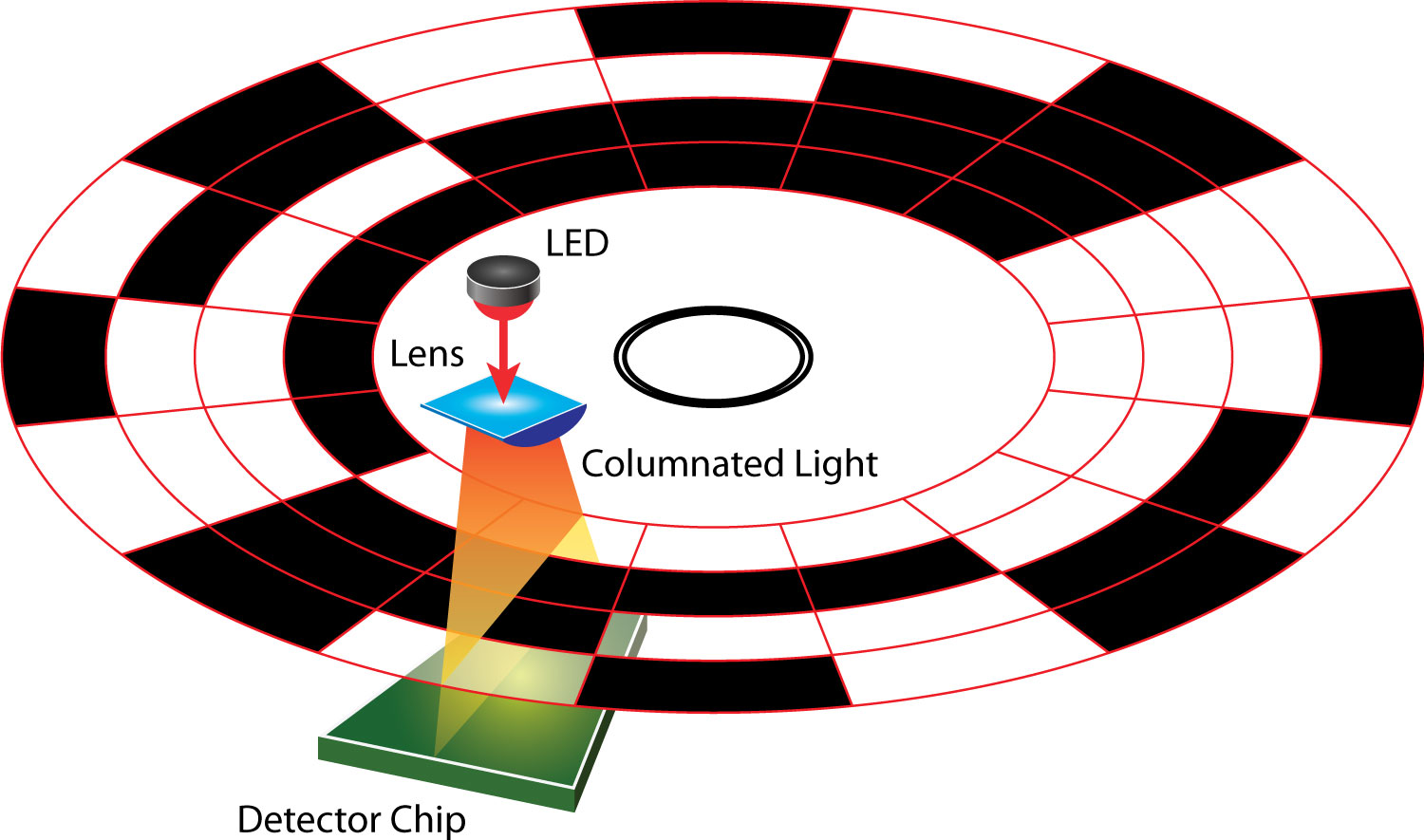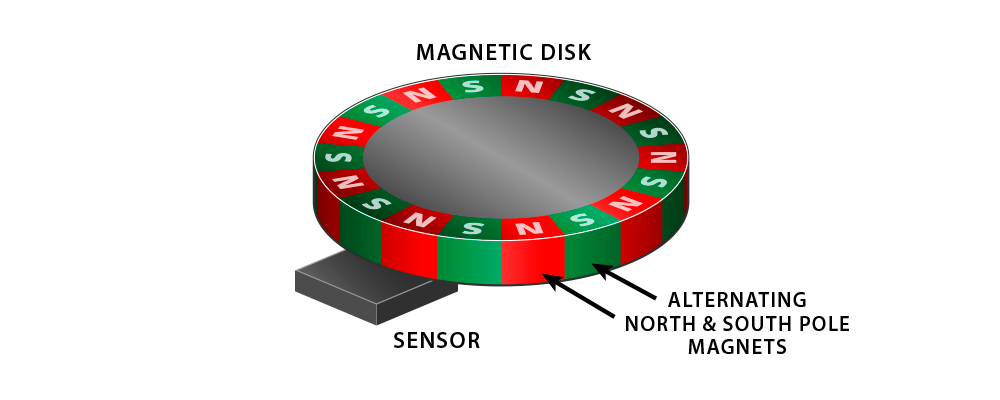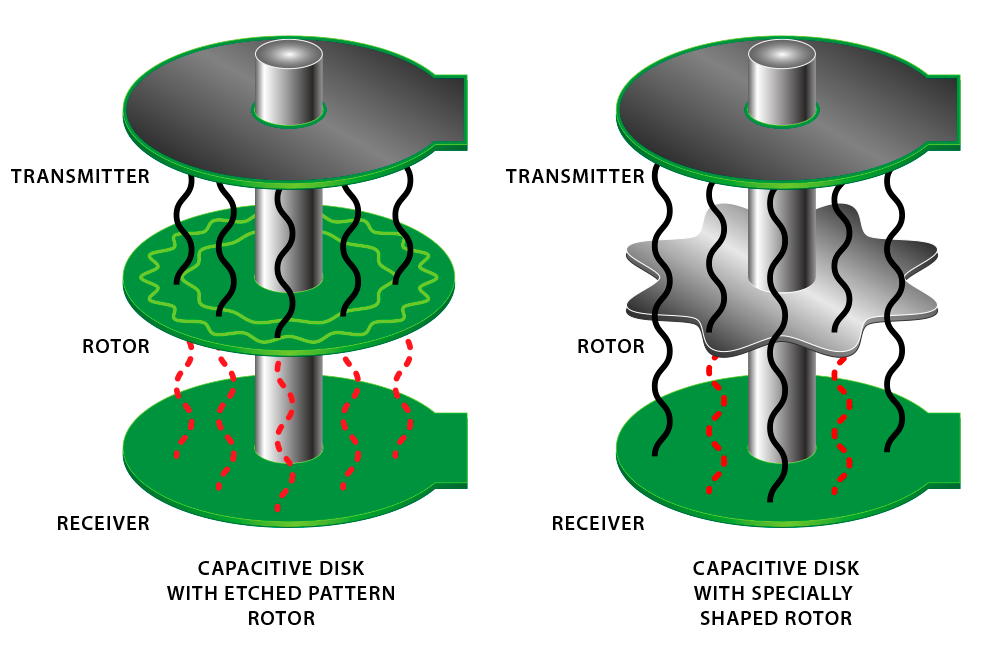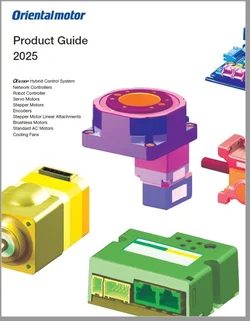Encoder feedback is essential for closed-loop motion control and can enhance accuracy, reliability, and even efficiency for machinery and robotics. In this article, we compare how optical, magnetic, and capacitive encoders work and share some selection tips.
What's covered?
- How do Encoders Work?
- Optical Encoders: Most Common
- Magnetic Encoders: Emerging
- Capacitive Encoders: Newest
- The Case for Magnetic Encoders
- 10 Things to Consider When Choosing Optical vs Magnetic vs Capacitive Encoders
- FYI: Multi-Turn Mechanical Absolute Encoder
How do Encoders Work?
|
|
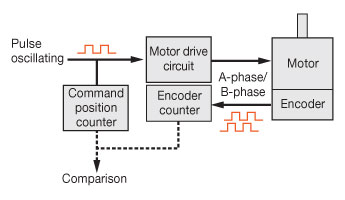 |
An encoder is typically installed on a motor's rear shaft. It senses the shaft's rotation as it moves. Although the two technologies are similar, this article will focus on rotary encoders rather than linear encoders.
The method that each type of encoder tracks shaft rotation differs, but they all generate a pulsetrain signal as a motor shaft rotates. By doing some simple math, the number of pulses can tell you the location of the motor shaft and how far it has rotated from a home position. For example, if the encoder resolution is 200 pulses/rev and the encoder outputs 200 pulses, then you know the motor shaft has rotated one full revolution. The frequency of the pulses, measured in Hz (or pulses per second), can tell you how fast the motor shaft is rotating. The direction is determined by monitoring which channel of pulses is leading the other (A or B-phase). This is the short explanation.
Knowing what to do with the pulses is the next step. Here's a video that shows how an encoder is used on a diverting conveyor application that uses a stepper motor.
Now let's dig a little deeper into the various types of encoders and how they work.
Optical Encoders: Most Common
Optical encoders are the most common type of encoders used and provide the highest precision, accuracy, and resolution. Since the light emitter and light receiver are electrically operated, they require a constant power supply to work.
In a traditional "transmissive" optical encoder typically mounted on the rear shaft of stepper motors, brushless motors, or servo motors, the main components consist of a light emitter (ie: LED), a code wheel, a light receiver (photo sensor), a power circuit, and an output circuit. With these 3 components, motion can be sensed by the following method.
| The code wheel is a wheel with slits cut out near the outside of the wheel. As the code wheel is rotated by the motor shaft, the light from the stationery light emitter either is blocked by the code wheel or shines through the slits in the code wheel. This provides a stream of binary on/off "pulses" of light from the photo sensor's perspective, and the output circuit outputs an ON signal when the light shines through, and an OFF signal when the light is blocked. A motor driver, PLC, or HMI typically interprets the pulsetrain signal and can convert it to steps, degrees, inches, or mm for a quicker understanding of where the motor shaft is, and how fast it's moving. Additional measures, such as position correction, can be performed on the fly. | 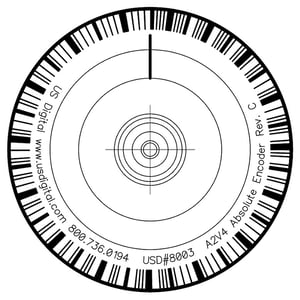
Source: US Digital |
There are many classifications of the optical encoder as explained below.
Transmissive or Reflective?
Traditionally, optical encoders are the transmissive type, which means the LED light has to shine through the transmissive disk (code wheel), and then to the photo (light) sensor. In recent years, the transmissive disk has been replaced by a reflective disk to save space.
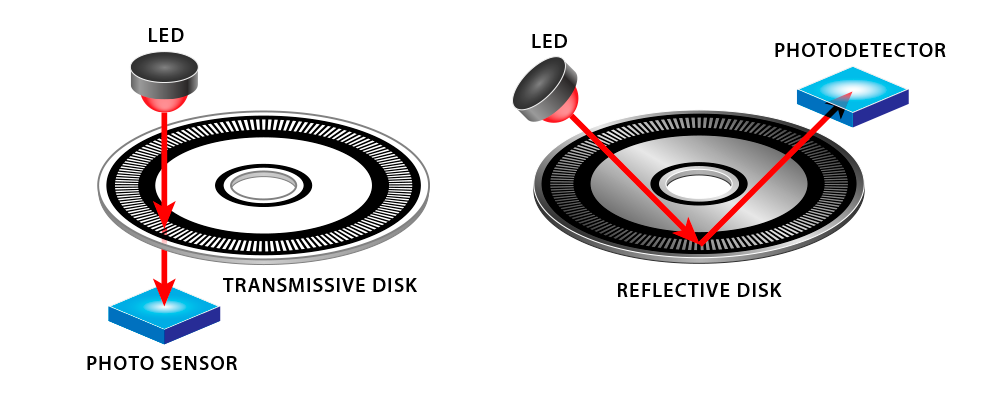
Source: US Digital
Incremental or Absolute?
|
Incremental encoders detect and output a pulse signal but can only track changes in relation to a home position. The reason is that the code wheel inside an incremental encoder does not provide any unique position values, as every position value is treated the same. If you have a third Z or index channel, then there is one absolute position that can be used to reference a home starting position or count revolutions. If you look at a code wheel of an incremental encoder, every slit looks the same. If power is lost, the position information is also lost, and the motor or linear actuator will need to perform a homing operation to start counting pulses from the beginning; often requiring a restart of the machine. Incremental encoders are typically more affordable and suitable for applications where absolute position feedback isn't critical, such as in speed control systems where it's more important to track velocity and acceleration. |
Source: US Digital |
Magnetic Encoders: Emerging
|
Magnetic encoders do not use a light emitter or a light receiver but still use a code wheel and a sensor. Instead of slits, the code wheel has alternating north and south pole magnets on the outer edge of the code wheel. The magnetic sensor senses changes in magnetic polarity when the poles pass by. The end result is the same as the output circuit outputs pulses to a PLC or HMI. Since there's no need to power the light emitter and receiver, the magnetic encoder uses less power than an optical encoder. |
Source: US Digital |
Magnetic encoders are more robust than optical encoders in the sense that they can operate better in humid, dusty, or dirty environments. However, magnetic encoders may not work well in an environment with magnetic interference. Magnetic encoders are also offered in rotary, linear, incremental, and absolute types. To enable a magnetic encoder to track absolute positions, multiple magnetic disks are necessary.
Capacitive Encoders: Newest
|
Source: US Digital |
Capacitive encoders use a newer technology that offers the same environmental benefits as magnetic encoders. According to US Digital, this type of encoder detects changes in capacitance using a high-frequency reference signal and then converts the signal into pulses. The structure includes a transmitter, a rotor, and a receiver. The rotor typically has a pattern etched into it or has a uniquely shaped design. When the rotor moves in between the transmitter and the receiver, the pattern modulates the high-frequency signal generated by the transmitter. The receiver is able to read the modulated signal and translate it to a pulse signal.
|
Like an optical encoder, capacitive encoders are susceptible to noise and electrical interference, so sometimes additional preventative measures have to be made. Capacitive encoders also have a low current draw. Capacitive encoders are also offered in rotary, linear, incremental, and absolute types. To enable a capacitive encoder to track absolute positions, multiple capacitive disks are necessary.
👉 The Case for Magnetic Encoders
Magnetic encoder technology is emerging as a competitive alternative to traditional optical encoders. Compared to optical encoders, magnetic encoders offer similar resolution, durability, and accuracy, and they can be an economical alternative in environments without magnetic interference.
Magnetic encoders offer two main advantages over traditional optical encoders:
- Greater Durability: With no moving parts or optics, magnetic encoders are highly resistant to dust, debris, and vibration. They can operate reliably in more challenging environments where optical and capacitive encoders would fail.
- Decreasing Cost: Magnetic encoder prices have dropped dramatically in recent years. Their simple, solid-state design also reduces maintenance and repair costs over the product life cycle.
Magnetic encoders provide an optimal solution for precision motion control and automation by delivering a combination of performance, durability, and value. As costs continue to decrease, they are poised to remain a competitive choice in encoder applications across many industries.
Oriental Motor offers an incremental magnetic encoder for the PKP Series 2-phase and 5-phase stepper motors. Encoder resolutions are 200, 400, 500, and 1,000 PPR. Its Z-phase output (along with the TIM output) can be used for simple home detection. For higher encoder resolutions and multi-turn absolute tracking, we'd recommend another series below.
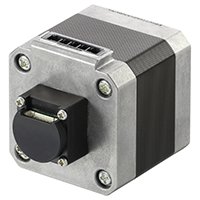 |
|
|
|
Interested in an absolute version of the magnetic encoder?
Summary
By evaluating your exact needs and carefully considering all the factors, you can determine the best encoder technology for your motion control application.
- Optical encoders offer higher resolution and precision, but they're susceptible to dirt, dust, oil, electrical noise, shock, and vibration. They are also more expensive and consume more power than other types.
- Capacitive encoders can be affected by contaminants such as dust and moisture, which may alter the capacitance and lead to errors. They can also be sensitive to electromagnetic interference and have a slower update rate for certain systems.
- Magnetic encoders are rugged and can handle shock and vibration better than optical encoders. They are also unaffected by dirt, dust, oil, moisture, or electrical noise interference. However, they are susceptible to magnetic interference.
Oriental Motor preassembles encoders with our stepper motors and servo motors for quality. Every single assembled motor goes through vigorous reliability testing, including torque, noise, encoder waveform, and pulse count, before they are shipped. The other day when I was in the factory, I walked by someone that was performing an inspection for encoder screw quality. Oriental Motor is serious about quality, and we mean it. Talk to our team about closing your loop.
|
For Advanced Users Need Higher Resolutions or Multi-Turn Absolute Tracking? For design engineers who prefer higher encoder resolutions or need to track the rotation of the mechanism directly, we have the Standalone Rotary Encoder. By tracking the mechanism directly, errors such as backlash or lost motion can be eliminated. For design engineers who would find a magnetic encoder with multi-turn absolute position tracking abilities useful, we recommend using products from the αSTEP AZ Series Hybrid Step-Servo product family. This family of motors, actuators, and universal drivers can drive multiple axes and feature a patented battery-free mechanical absolute encoder that combines magneto-resistive sensing technology with a set of internal gears to track up to 1,800 revolutions. Advanced functions such as sensorless homing and servo emulation mode can reduce home routine delays and power consumption for more efficient operation. The battery-free mechanical absolute encoder is also available on our new AZX Series servo motors.
|
For help with encoders or closed-loop products, please discuss your application with our technical support engineers.
